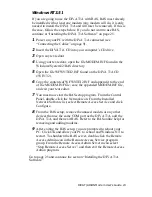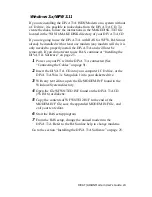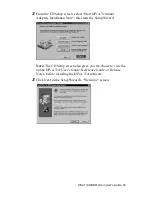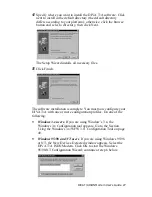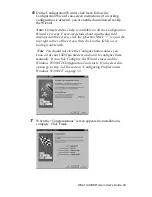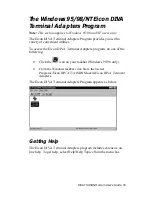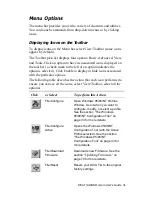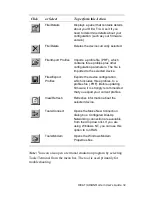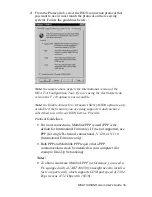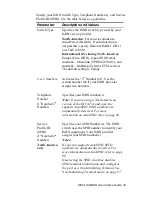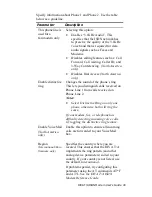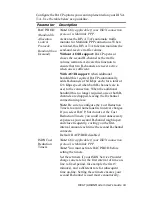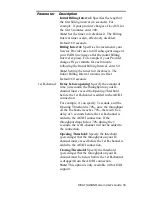
DIVA T/A ISDN Modem User’s Guide 33
Using the Windows 95/98/NT
Configuration Tool
This section shows you how to use the Windows 95/98/NT
Configuration Tool to configure one or more configuration profiles.
About Configuration Profiles
A profile is a set of parameters that define a particular ISDN setup.
When you run the Windows 95/98/NT Configuration Wizard for the
first time, you configure a profile with the default name Profile 0. In
addition to this profile, you can configure two other profiles that
define different ISDN setups (corresponding to the needs of different
applications). You might, for example, configure profiles to match the
ISDN setup needed to connect to your office, your Internet Service
Provider (ISP), and CompuServe. When you need a particular ISDN
configuration, you simply select the appropriate profile. This saves
you the trouble of reconfiguring all your ISDN parameters each time
you switch applications.
Note: When you use the Configuration Wizard to configure a profile,
you cannot set Phone Line and Advanced ISDN parameters (default
settings are implemented). If you want to modify these parameters, use
the Configuration Tool.
A profile contains information about the following:
•
Protocol. Your ISDN protocol. It must match the protocol
implemented at the other end of the connection. Always On /
Dynamic ISDN (AO/DI) is also available if you have subscribed
to it.
•
Location. The location’s ISDN switch type, telephone
number(s), and SPID(s), as required.
•
Phone Lines. Information about the location’s phone line(s).
This information is only required if your DIVA T/A is equipped
with analog device ports. (See also, “Analog Device Support” on
page 98).
•
X.25. (Only available with AO/DI support). As AO/DI uses the
ISDN D-channel X.25 packet service, the X.25 Version and
X.25 facilities can be configured.
•
BACP. Bandwidth Allocation Control Protocol and ISDN Cost
Reduction Parameters.





